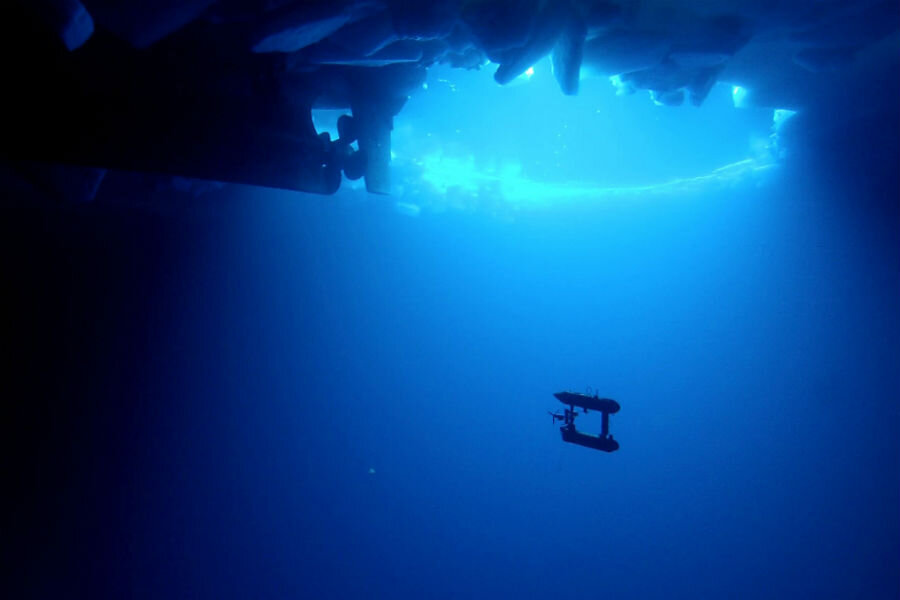Why are thousands of robots roaming oceans?
Loading...
Right now, there are thousands of robots roaming the Earth's waters. More and more, scientists are relying on bots to fill a knowledge gap, sending autonomous technology where humans cannot go, and gathering data on vast and diverse ecosystems that are increasingly under threat.
In the sea, a significant portion of the current number of autonomous vessels are part of the Argo environmental research project, according to a recent report by Mashable Australia.
Aquabots are the most advanced way to measure the reaches of the ocean, rivers, and lakes, Matthew Dunbabin, a principal research fellow at the Institute for Future Environments at the Queensland University of Technology, told Mashable.
Part of an international collaboration to monitor climate change using robots, Argo floats are very simple robotic buoys, Mr. Dunbabin said. The aquabots float with the currents and go down to a depth of around 1.2 miles. Every 10 days they pop back up to the surface and transmit their data, which in turn feeds global weather system and ocean current models, according to Mashable.
This activity allows, for the first time, according to Argo, continuous monitoring of the temperature, salinity, and velocity of the upper ocean, with all data being relayed and made public within hours of collection. At the time of this writing, Argo has 3,881 floats collecting data. Fifty percent of the fleet in the ocean is provided by teams in the United States, with contributions from 29 other countries.
Dunabin has other aspirations for the Argo research project.
"For health and safety reasons, if we have a flood or cyclone, or a disaster like an oil spill, it's often not practical to send humans into that situation," Dunbabin said, adding that Argo's Inference robots may have a role in those responses.
Inference is a robotic, fiberglass boat system designed to live on water for months at a time with sensors onboard the robots that can provide researchers with real-time environmental data on things like water quality and gas emissions.
Scientists in the US are already deploying similar bots. In 2009, after the Deepwater Horizon oil spill in the Gulf of Mexico, the US Integrated Ocean Observing System sent a glider, another type of robot, to detect oil. The effort was the first of its kind, and a major help in narrowing the search for pollution, making for a faster and more precise cleanup effort.
“Gliders sample the ocean in places it is impractical to send people and at a fraction of the price,” said Zdenka Willis, director of the US IOOS program, to Smithsonian. “Using robots to collect scientific data is the wave of the future in terms of ocean observing.”
Sustained observations of the ocean would be a major boon to the development of reliable climate models, and Argo researchers emphasize the urgency for ocean observation.
A study published in the journal Science at the beginning of the year had dire warnings for Earth's marine life, but researchers were quick to say it is not too late to avoid cataclysm in the ocean.
“We may be sitting on a precipice of a major extinction event,” said Douglas J. McCauley, an ecologist at the University of California, Santa Barbara, and an author of the new research, in an interview with The New York Times. But compared with land, Mr. McCauley and his colleagues found that oceans are still mostly intact, and still verdant enough to rebound.
“We’re lucky in many ways,” said Malin L. Pinsky, a marine biologist at Rutgers University and another author of the new report. “The impacts are accelerating, but they’re not so bad we can’t reverse them.”






